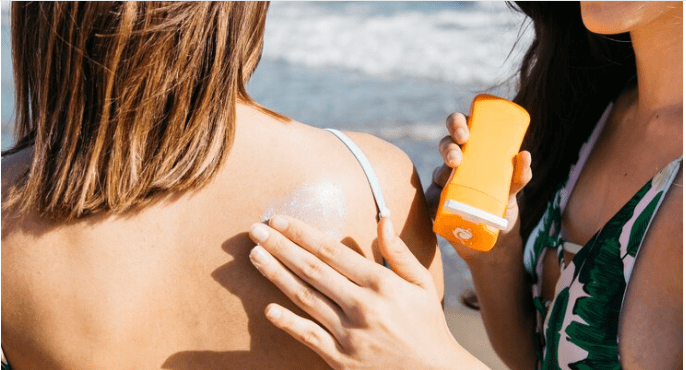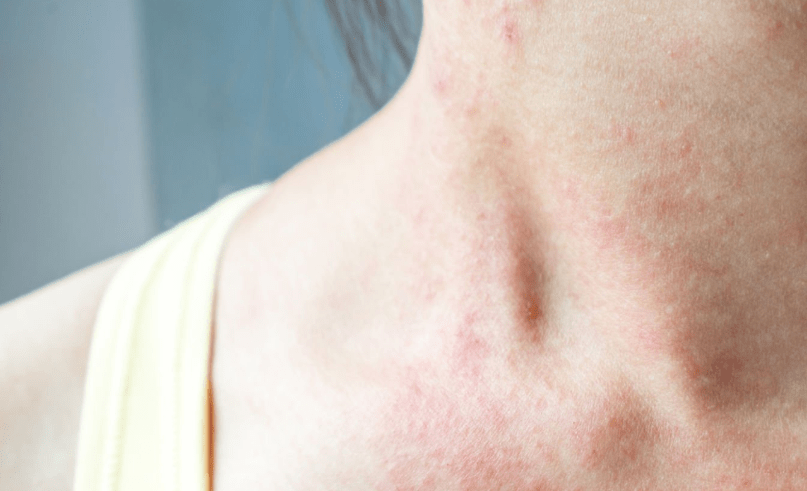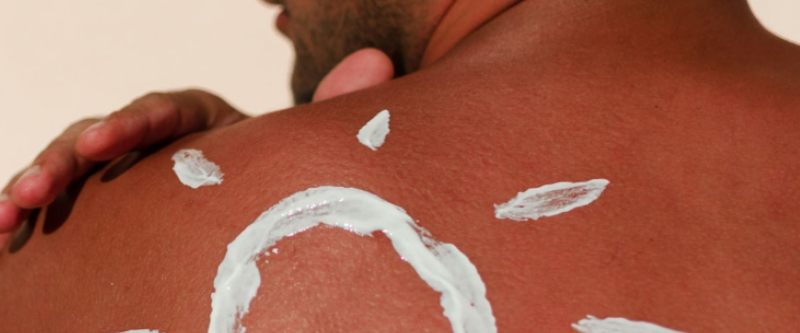Cyclists can develop sunburn from spending too much time in the sun. Prolonged exposure to UV rays can lead to painful burns, premature skin aging, and an increased risk of skin cancer. Cyclists face significant sunburn risks.
Yes, lotion can help relieve sunburn by moisturizing the skin and reducing discomfort. Look for aloe vera or hydrocortisone lotions, which can soothe and promote healing. Avoid lotions with petroleum or benzocaine, which can irritate sunburned skin.
In this blog post, we'll dive into the pros and cons of lotion, this sunburn solution, and the Considerations to make when utilizing lotion to relieve sunburn.
Key Takeaways
- Lotions can help soothe sunburned skin, ease discomfort, and hydrate the skin, reducing peeling and dryness.
- Lotions with cooling properties like aloe vera, non-greasy formulas, and pain-relieving ingredients can be beneficial for treating sunburn.
- Some lotions may trap heat in the skin, contain irritants, or cause allergic reactions. Also, they only provide temporary relief and don't speed up healing.
- Cyclists who often experience sunburn should choose a non-dyed, non-perfumed lotion. Aloe-based lotions are recommended.
- Avoid petroleum jelly for sunburn as it can trap heat. Lightweight, water-based lotions are a better choice.
- Chilled lotion can provide extra relief, reducing heat and inflammation.
- Apply lotion gently, avoid direct sun exposure, stay hydrated, and reapply lotion as needed.
- Watch for signs of infection, such as redness, swelling, or pus, and seek prompt medical attention if symptoms appear.
Does Lotion Help Sunburn: 12 Pros and Cons

Sunburn is an all-too-common consequence of prolonged exposure to the sun without adequate protection. The discomfort associated with sunburn can disrupt daily life, leading many to seek relief through various remedies, one of the most popular being lotions. Here are some pros and cons of lotion for sunburn:
Pros
Soothes the Skin
Lotions containing soothing ingredients like aloe vera are known for their cooling properties. Aloe vera has been used for centuries to treat burns thanks to its anti-inflammatory and moisturizing effects. Applying a lotion with aloe vera can ease the burning sensation and reduce redness, making the skin feel more comfortable.
Moisturizes
Sunburn dehydrates the skin, causing it to become dry and flaky. Lotions help replenish lost moisture, restoring the skin's natural barrier. Hydration is crucial for healing, as it supports the skin's repair processes and prevents further peeling.
Reduces Peeling
Keeping the skin moisturized can minimize peeling, a common aftermath of sunburn. While peeling is part of the healing process, excessive dryness can exacerbate it. Regularly applying lotion ensures the skin remains supple and smooth, reducing visible flakiness.
Eases Pain
Some lotions contain pain-relieving ingredients, such as hydrocortisone. An anti-inflammatory steroid, hydrocortisone reduces inflammation and eases discomfort. It's beneficial for severe sunburns where pain is a significant issue.
Non-Greasy Options
Many people shy away from lotions because of their greasy feel. However, non-greasy formulations provide moisture without leaving the skin oily. These lotions are absorbed quickly, making them ideal for those who prefer a lightweight solution.
Fragrance-Free Options:
For those with sensitive skin, fragrance-free lotions are a safe bet. Fragrances can sometimes irritate sunburned skin, so opting for a product without added scents can prevent further irritation.
Cons
May Trap Heat
Thicker, heavier lotions can trap heat in the skin, exacerbating the burn. This can delay cooling and prolong discomfort. Choosing a lotion that allows the skin to breathe while providing hydration is essential.
Potential Irritants
Lotions containing certain ingredients, such as those ending in caine, can irritate sunburned skin. These ingredients may cause allergic reactions or worsen sensitivity, so reading labels carefully is crucial.
Oily Formulas
Oil-based lotions can leave the skin feeling greasy and uncomfortable, especially in hot weather. This can deter people from using them as often as needed for effective relief.
Allergic Reactions

Some individuals may experience allergic reactions to specific lotion ingredients. If you have a history of skin allergies, consult a dermatologist or conduct a patch test.
Temporary Relief
Lotions provide temporary relief but do not speed up the healing process. They may alleviate symptoms like itching and dryness, but the body's natural healing timeline remains unchanged.
Not All Ingredients Are Effective
While lotions offer multiple benefits, not all ingredients are proven to help with sunburn. For instance, while aloe vera is beneficial, not every lotion containing it has the right concentration to be effective.
8 Precautions for Cyclists Using Lotion for Sunburn Relief
Sun exposure for prolonged periods can cause sunburn, a common issue among cyclists who often overlook adequate sun protection. Sunburn not only causes discomfort but also poses long-term health risks. To ease sunburn, many cyclists turn to lotions. Here are some precautions cyclists should take when using lotion for sunburn relief, ensuring comfort and effective healing.
Choose the Right Lotion
Selecting the lotion is crucial for soothing sunburned skin. Cyclists should opt for non-dyed, non-perfumed lotions to minimize irritation. Fragrances and dyes can exacerbate sensitive skin, leading to more discomfort.
Aloe vera-based lotions are highly recommended because of their natural soothing properties. Aloe vera's healing properties include its ability to cool and hydrate the skin, making it an ideal choice for sunburn relief. When choosing a lotion, look for labels that specify sunburn relief or contain aloe vera as a primary ingredient.
Avoid Petroleum Jelly
While some might consider using petroleum jelly (like Vaseline) for its moisturizing benefits, avoiding it for sunburned skin is essential. Petroleum jelly traps heat and can worsen burns by creating a barrier on the skin. Trapping heat and potentially worsening the burn.
This can lead to prolonged discomfort and delayed healing. Instead, cyclists should use lotions that allow the skin to breathe and release trapped heat. Opting for lightweight, water-based lotions can provide hydration without the risk of trapping heat.
Cool the Lotion
Consider chilling your lotion in the refrigerator before applying for extra relief. The cooling effect can significantly reduce the heat from the sunburn and provide immediate comfort. This method is effective post-ride when the skin radiates heat from sun exposure. When applying the chilled lotion, the cool temperature will help soothe inflammation and reduce redness, aiding in recovery.
Apply Gently
Sunburned skin is sensitive and easily irritated, so applying lotion with care is crucial. Avoid rubbing it into the skin, which can cause further irritation. Instead, gently pat the lotion onto the affected area.
This method ensures that the lotion is absorbed without aggravating the skin. Cyclists should pay special attention to areas that get the most sun exposure, such as the shoulders, arms, and back of the neck, applying lotion liberally but gently.
Stay Hydrated

Sunburn can lead to dehydration, both topically and internally. Cyclists should make it a priority to stay hydrated by drinking plenty of water. Proper hydration supports the body's natural healing processes and helps maintain skin moisture from the inside out. After a long ride under the sun, replenishing fluids is essential for overall health and aiding the recovery of sun-damaged skin.
Avoid Sun Exposure
Once sunburned, keeping the affected skin out of direct sunlight is critical to prevent further damage. Cyclists should take precautions by wearing protective clothing, such as long-sleeved jerseys and hats, or seeking shade.
Planning rides during more excellent parts of the day, such as early morning or late afternoon, can minimize additional sun exposure. If riding is unavoidable, consider using a broad-spectrum sunscreen of at least 30 SPF to safeguard against further UV damage.
Reapply as Needed
Moisturizing sunburned skin is not a one-time task. Cyclists should reapply lotion throughout the day to maintain moisture and continuous soothing. The frequency of reapplication will depend on the severity of the sunburn and the lotion's absorption rate.
Keeping the skin consistently moisturized can help reduce peeling and promote faster healing. Carrying a travel-sized bottle of lotion during rides is beneficial for easy access and reapplication.
Monitor for Infection
Sunburn can sometimes lead to skin damage that increases the risk of infection. Cyclists should watch for signs of increased redness, swelling, or pus. If these symptoms appear, it's crucial to seek medical attention promptly.
Preventive measures include keeping the sunburned area clean and avoiding the temptation to scratch or peel the skin. Applying lotion regularly can help protect the skin barrier and reduce the risk of infection.
Conclusion
As with most things in life, it's all about the balance. While lotion can't speed up the healing process of sunburn, it certainly can help with hydration, soothing, and relief from some of the uncomfortable symptoms. But remember, precaution is critical.
Select the suitable lotion, preferably lightweight, non-greasy, fragrance-free, and with soothing ingredients like aloe, and apply it carefully.
Check your skin regularly for signs of allergic reactions and be aware of potential irritants. You should also remember that lotion isn't a substitute for good sun protection habits, even though it is a helpful tool in sunburn recovery.
FAQs
It's best to cool the skin first with a cool shower or damp cloth before applying lotion. This helps reduce inflammation and allows the lotion to work more effectively.
Yes, avoid ingredients like benzocaine or lidocaine, which can irritate sunburned skin. Also, stay clear of alcohol-based products that can further dry out the skin.


